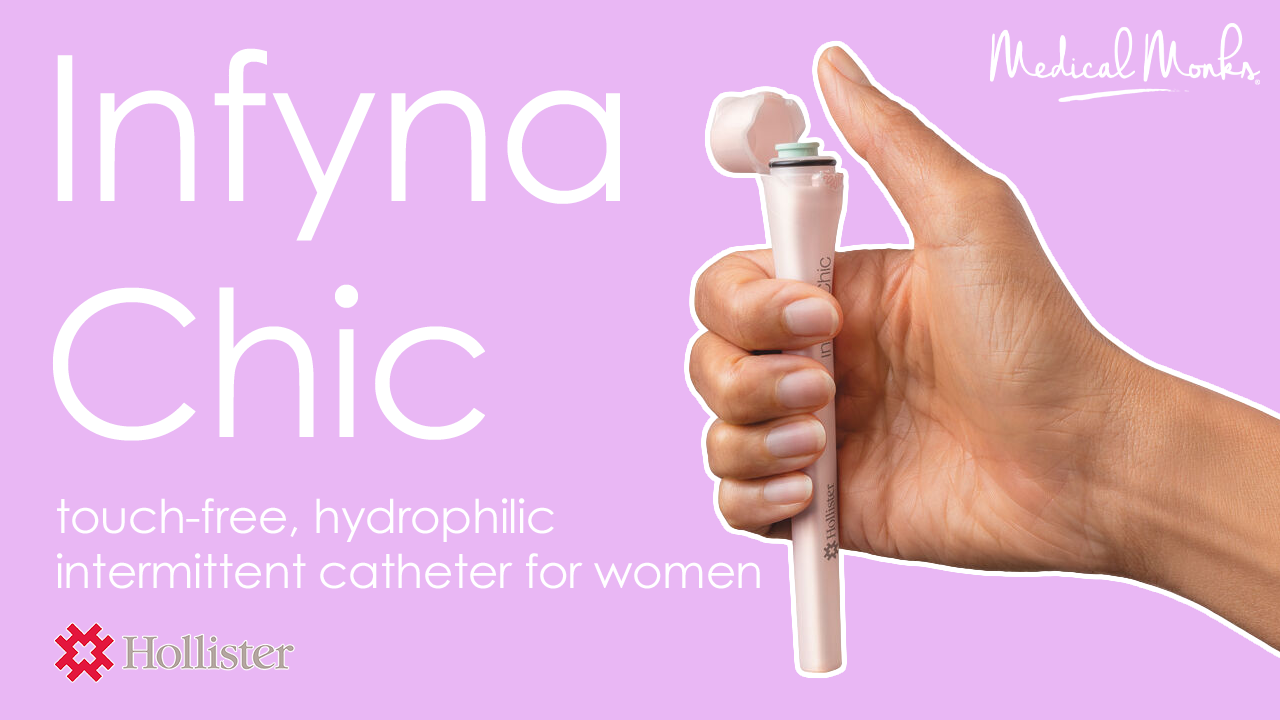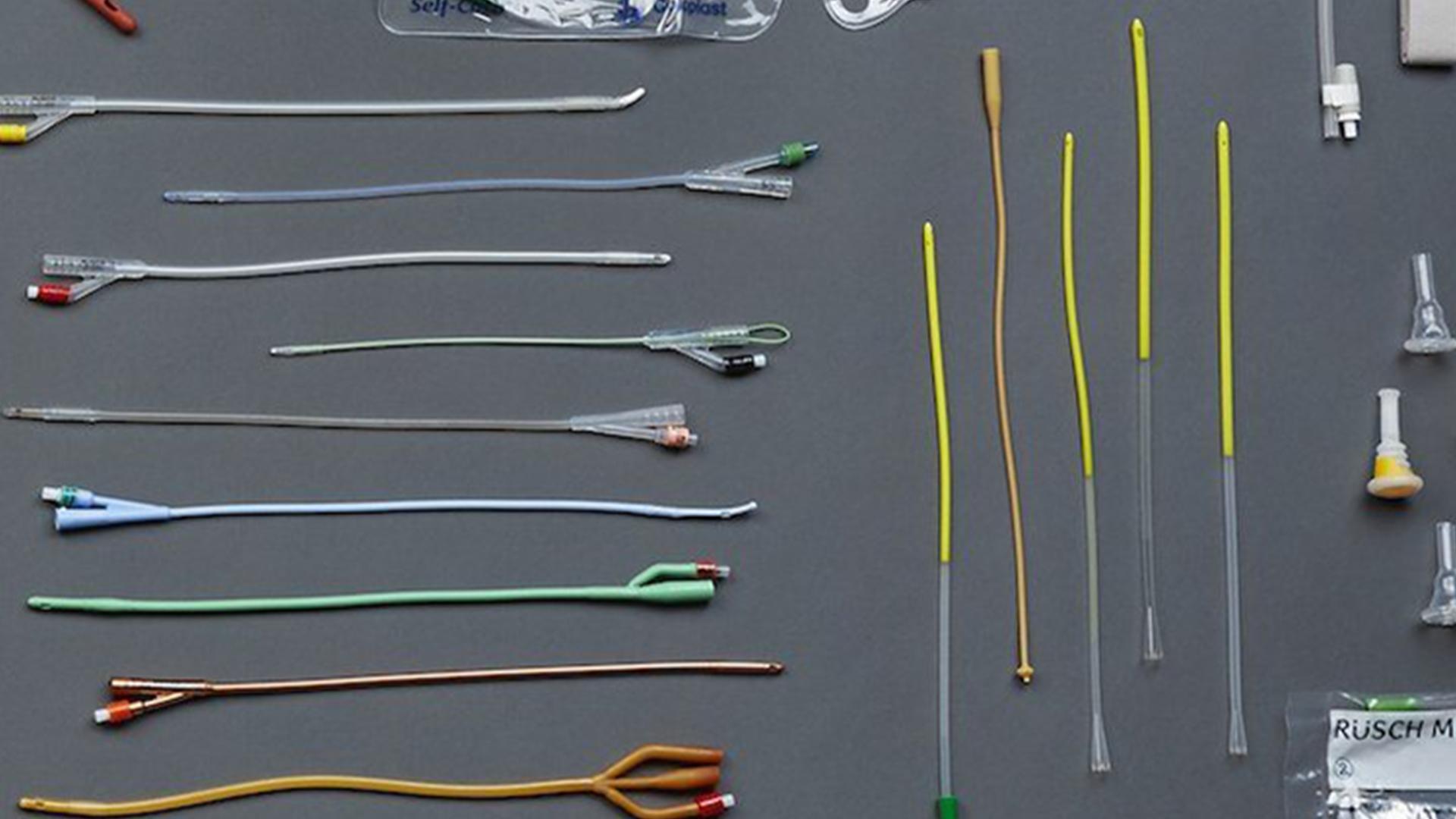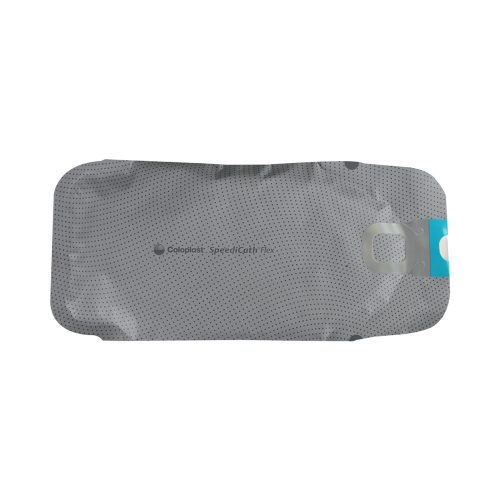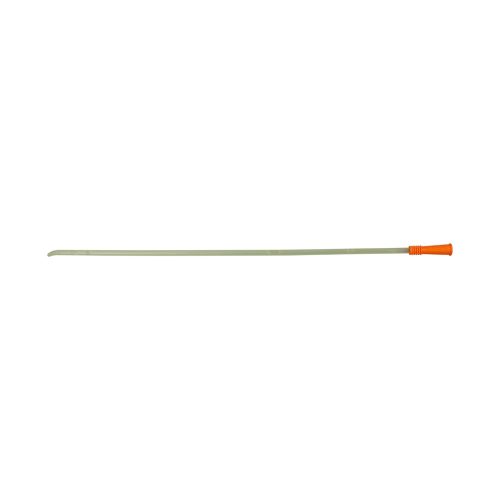Self-catheterization can feel daunting. But, with a few tips and tricks, it’s not as challenging as it may seem at first.
What Is “Cathing”? Indwelling Catheterization and Self-Catheterization
Catheterization, also called “cathing,” is a process that uses a tube to artificially empty the bladder when it cannot empty normally. If a person is experiencing urinary incontinence, acute urinary obstruction, or acute urine retention, a physician may recommend catheterization.
There are two types of catheterization: intermittent self-catheterization, and indwelling catheterization. Indwelling catheters are installed surgically. They prop open the urethra and urinary sphincter, allowing urine to run from the bladder through a tube into a bag.
Self-catheterization uses catheters that are not attached. Instead, the catheter is used to trigger and assist urination into a toilet throughout the day. The catheter is disposed of after each use.
Why Would Self-Catheterization Be Necessary or Recommended?
Self-catheterization, also called intermittent catheterization, offers significant benefits over other forms of catheterization when it’s an option.
Intermittent catheterization offers a greater chance of preserving and recovering bladder function compared to indwelling catheterization. It also gives the patient greater autonomy, and it allows for ongoing use of the urinary sphincter (which may otherwise atrophy).
Some studies additionally indicate self-catheterization reduces the risk of UTIs. However, this difference does not hold in all studies. Regardless, self-catheterization is the best choice for many patients experiencing acute urinary retention or urinary obstruction.
How Does Self-Catheterization Work? (Intermittent Catheters)
Self-catheterization works by using a tube to manually guide your own urine out from the bladder at regular intervals, when the pathway is otherwise blocked, or when the signal to urinate normally is malfunctioning.
Self-catheterization should not be painful. If it is, that’s a potential sign of a urinary tract infection. It can be mildly uncomfortable. However, it typically becomes more comfortable with time, as you become more practiced at the process.
Frequency: How Many Times a Day Should You Self-Catheterize?
If you’re unsure how often you should self-catheterize, reach out to your doctor or healthcare provider. That said, the average rate of intermittent catheterization is 4 – 6 times per day.
How To Live With Self Catheterization: Tips, Strategies and Coping
Self-catheterization can bring up complex feelings for many people. The adjustment period can be mentally and emotionally taxing.
While many strategies can make the process easier, if you feel severely overwhelmed or overburdened by any aspect of self-catheterization, or your health more generally, it’s wise to reach out for help. Local crisis lines and mental health services are well-practiced at helping those struggling with the will to live during challenging parts of one’s life.
Fortunately, there are several tips and strategies for self-catheterization, specifically, that can make the process easier.
1. Choose The Right Type of Intermittent Catheter For You
Intermittent catheters and catheterization products come in a diverse range of sizes, shapes, and styles. If you’re unsure where to start, use our catheter product guide to help decide on the right catheter options for you.
In addition to factors like size, shape, and gender, many catheter products incorporate features that enhance comfort, stability, and ease of use.
2. Build A Consistent Routine To Make The Process Normal
Create a daily routine where self-catheterization fits easily. Make sure you don’t feel the need to rush the cathing process, nor skip it simply due to busyness.
When it’s time for catheterization, incorporate good hygiene practices into your routine so they become habitual. Washing your hands before and afterwards, and safely disposing of catheter products after use is important.
Try adding relaxation techniques to your catheterization routine. Square breathing, mindfulness meditation, and relaxing music can be calming rituals that improve your self-catheterization experience.
3. Seek Emotional Support When You Need It
At the top, we mentioned the importance of seeking crisis or mental health services if you find yourself struggling with questioning how to live.
Yet, even people who are not experiencing such an extreme sense of overwhelm or despair can still feel sad, frustrated, anxious, or burdened by self-catheterization. No matter how you’re feeling, it’s wise to seek emotional support from friends, loved ones, or even a professional counselor when dealing with a complex medical issue.
4. Manage Fluid Intake Per Physician Directions
Pay close attention to your doctor’s instructions about hydration.
If you drink too much fluid, your bladder can become overly full. That can cause complications during self-catheterization. Conversely, not drinking enough fluid can cause dehydration, which can definitely worsen medical problems.
5. Contact Doctor If You Experience Infection Symptoms or Pain
While self-catheterization is generally safe, there can be complications. Stay aware of signs of urinary tract infections (UTIs), bladder infections, bladder perforations, urethral damage, or kidney infections. Symptoms of these complications can include:
- Painful urination
- Blood in urine
- Bladder spasms
- Pelvic pain
- Leaking urine
- No or very little urine emptying during catheterization
- Difficulty with catheter insertion
- Fever
- Rashes or sores
These complications can be urgent, so please contact your doctor as soon as you experience them. If you are experiencing both blood in urine and also fever, shaking, back or abdominal pain, or severe pain, please go to the emergency room.
Tips for Enacting Self-Catheterization Safely, Effectively, and Painlessly
1. Prioritize Hygiene
First and foremost, wash your hands. Then, use a sterile catheter. Open a new disposable catheter package for each insertion.
2. Sit Comfortably, With Good Angle
You will likely want to urinate in the toilet. So, sit or Squat on the toilet seat in a way that is comfortable for you. You may find it comfortable to elevate your feet somewhat on a footstool.
Catheter products often come with detailed use instructions. If you have a labia and vagina, it can be useful to use a small mirror to locate your urethral opening.
3. Prepare and Lubricate The Catheter
Some catheters are pre-lubricated. To lubricate it yourself, use a water-based solution like KY Jelly. Read all preparation instructions that come with your intermittent catheter.
4. Push Catheter Gently (Stable, Slow, Steady Motion)
Once your catheter is ready, set it against your urethral opening and push it in gently. Guide it with your hands while pushing slowly and steadily.
Slide the catheter 1-2 inches into the bladder. Then, hold the catheter in place as urine flows into the toilet.
5. Empty Bladder Thoroughly
Empty your bladder as completely as you can through the catheter.
If little to no urine leaves the bladder, note that, and bring it up to your medical provider. Otherwise, you should be ready to end the process.
6. Remove Catheter Gently And Finish Up
To remove the catheter, pull it gently downward and slide it out. Dispose of it safely. Wipe, flush, and wash your hands afterward.
Self-Catheterization Is Easier With Medical Monks
With Medical Monks’ wide range of intermittent catheterization products, hygienic, comfortable self-cathing is in reach. Shop now for the right catheters and systems for you. If you need assistance, please reach out! Our team is happy to assist you by chat online, or by phone at 844-859-9400.

The MEDICAL MONKS STAFF brings to the table decades of combined knowledge and experience in the medical products industry.
Edited for content by JORDAN GAYSO.









